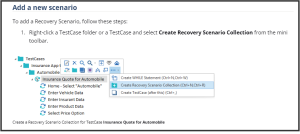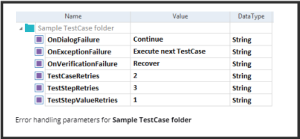Title:
TOSCA Exception Handling: Ensuring Reliable Test Automation
Introduction/ Issue:
In the world of test automation, unexpected errors and exceptions are inevitable. Whether it’s an element not found or a timeout error, these issues can cause test cases to fail, leading to unreliable results and wasted time. TOSCA, a leading test automation tool, offers robust exception handling features that help overcome these challenges and ensure smoother test executions.
Cause of the Issue: What Leads to Test Failures?
Test failures often occur due to several common factors:
Dynamic Elements: Elements on the application’s interface that change frequently or load asynchronously can be difficult to locate during test execution.
Timeouts: Slow responses from the application, often due to network issues or server load, can trigger timeouts, leading to failed tests.
Unexpected Pop-ups or Errors: Occasional pop-ups or errors that are not accounted for in the test script can halt the test execution.
Incorrect Data or Environment Configuration: Incorrect input data or environmental settings can also cause tests to behave unexpectedly, leading to failures.
How Do We Solve It: Implementing TOSCA Exception Handling
TOSCA provides several powerful tools to handle these issues:
Recovery Scenarios:
Solution: Define recovery scenarios in TOSCA that automatically manage exceptions such as missing elements or unexpected pop-ups. For example, if an element isn’t found, a recovery scenario can be set up to retry locating the element after a short delay or skip the step and log the error.


Event Handlers:
Solution: Use TOSCA’s event handlers to catch specific events like timeouts or element not found errors. These handlers can automatically apply corrective actions such as extending wait times, refreshing the page, or navigating to a safe state to prevent test failure.
On-Error Resume Next:
Solution: TOSCA’s “On-Error Resume Next” feature allows the test execution to continue with the next step even after encountering an error. This ensures that subsequent test steps are executed, providing a complete set of test results without unnecessary interruptions.


Custom Error Handling and Logging:
Solution: Implement custom error handling routines in TOSCA for more complex scenarios. These routines can include detailed logging, capturing screenshots, and notifying team members when critical errors occur, making it easier to diagnose and resolve issues.

Conclusion:
Exception handling is a vital aspect of successful test automation. TOSCA’s comprehensive exception handling features empower testers to address common issues like missing elements, timeouts, and unexpected errors effectively. By implementing these tools, you can ensure that your automated tests are more reliable, consistent, and resilient, ultimately leading to better software quality and faster time-to-market.
